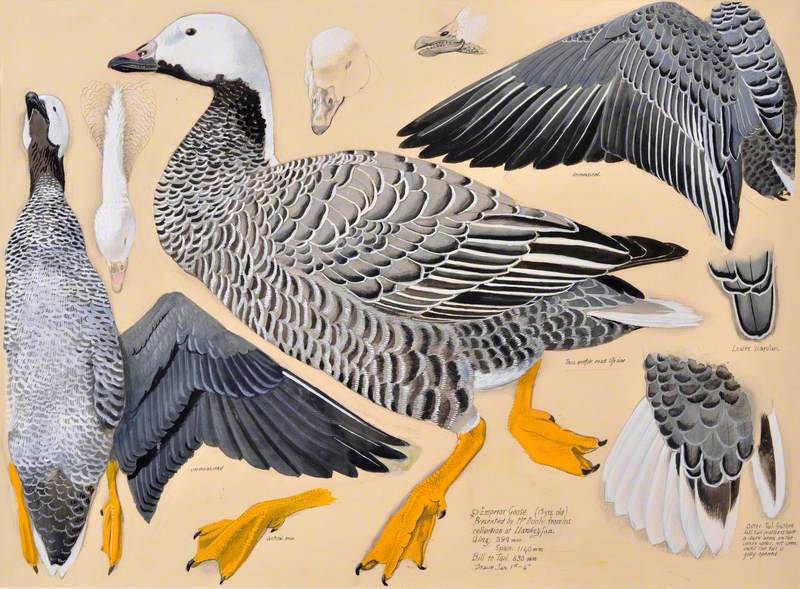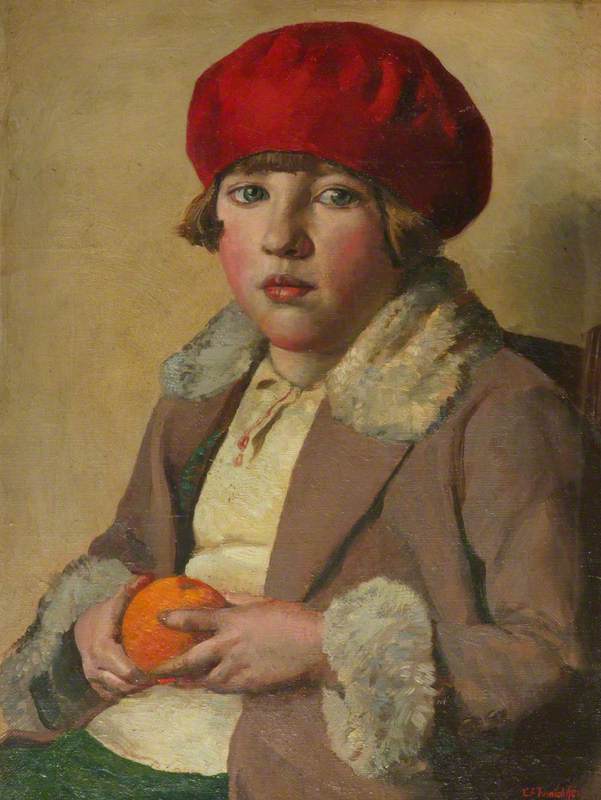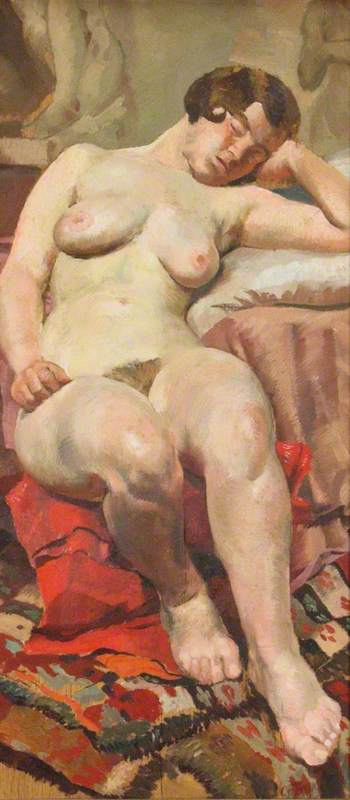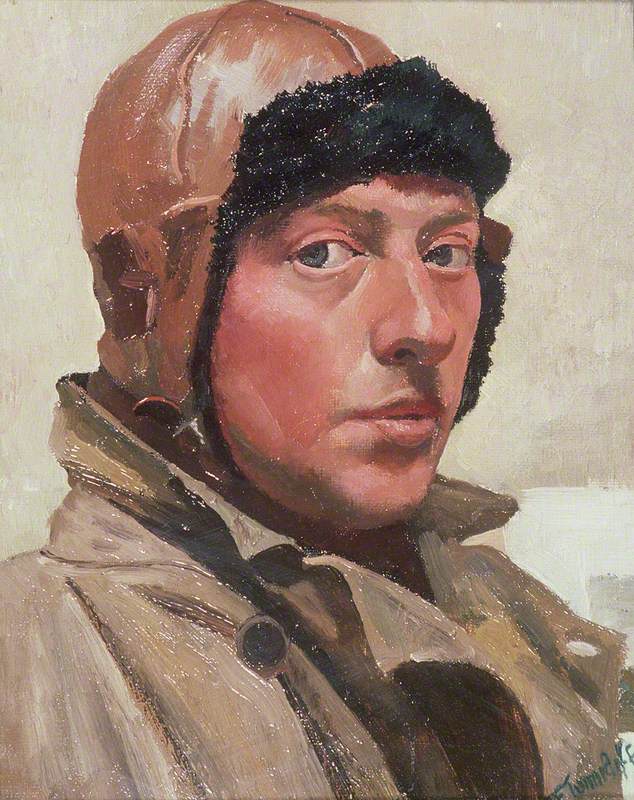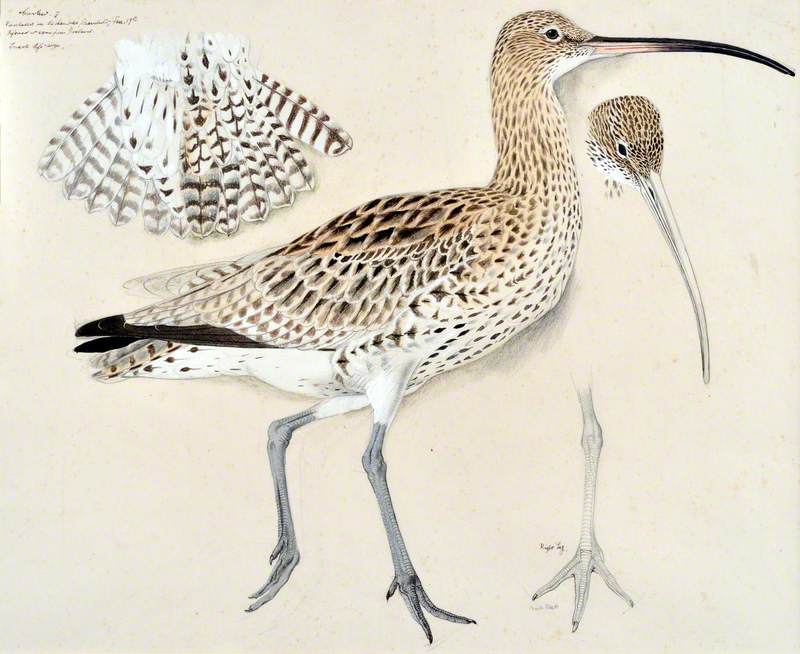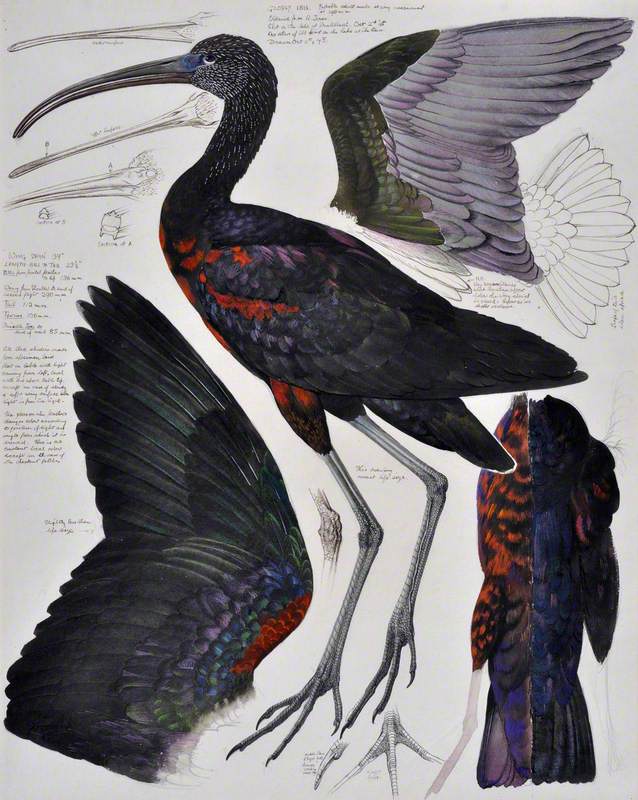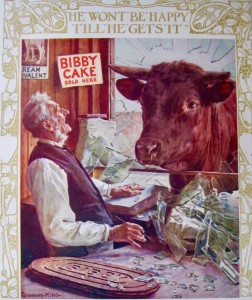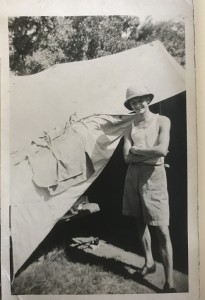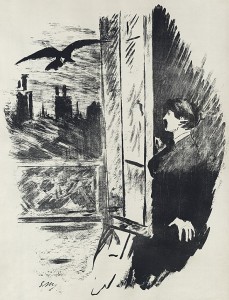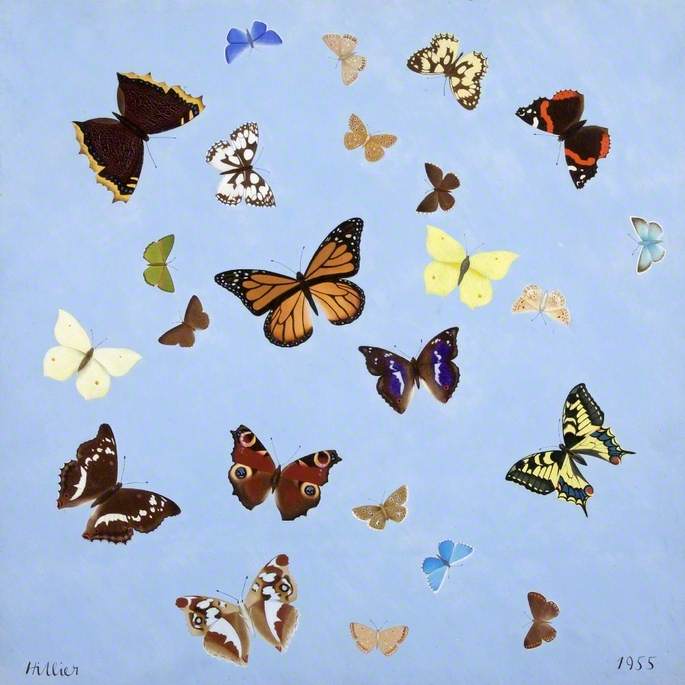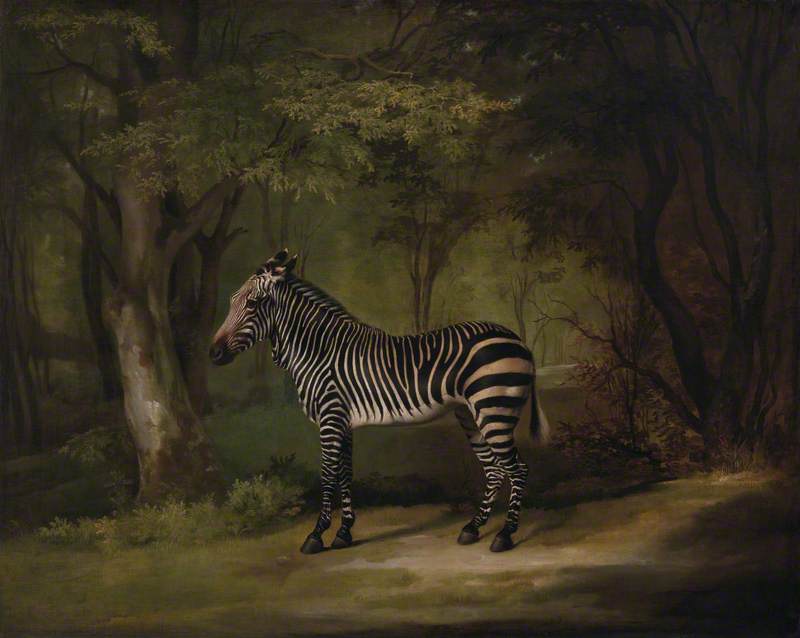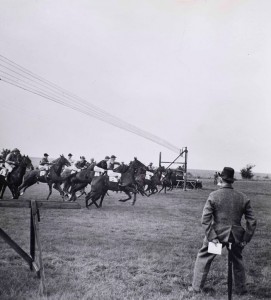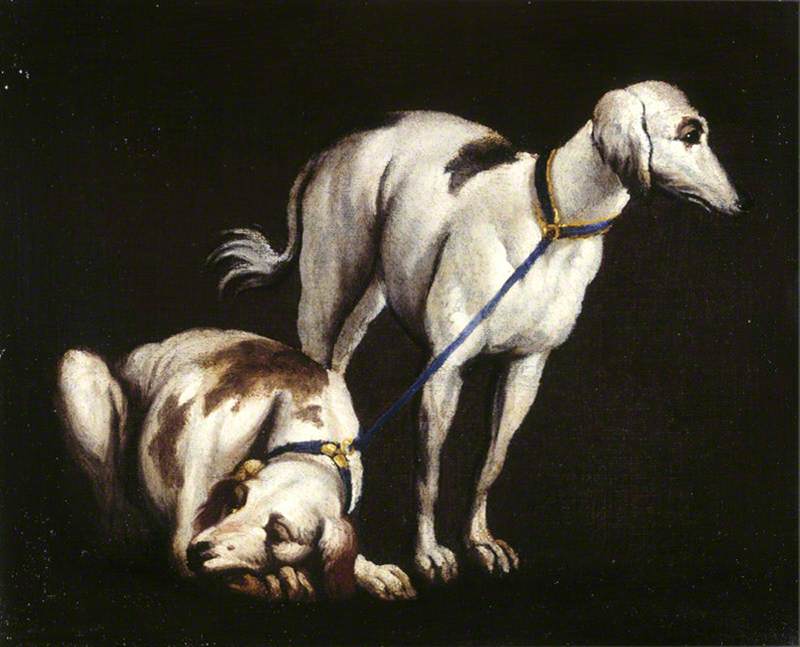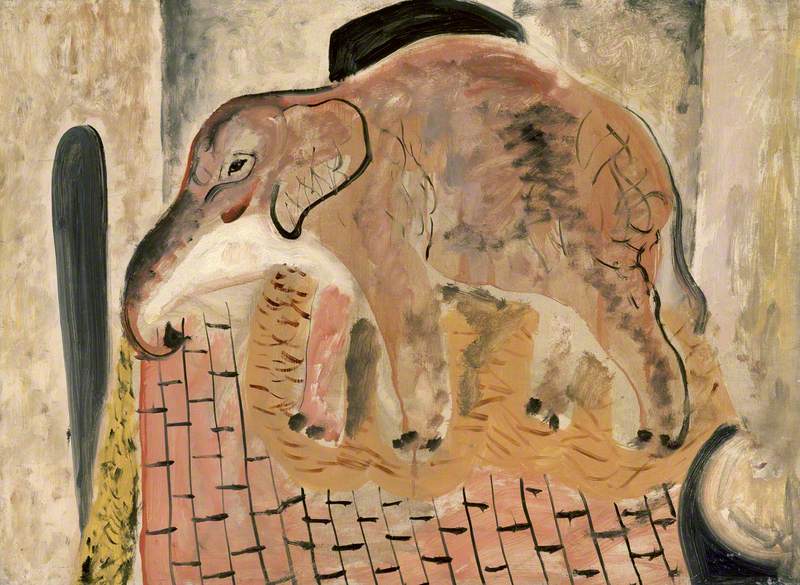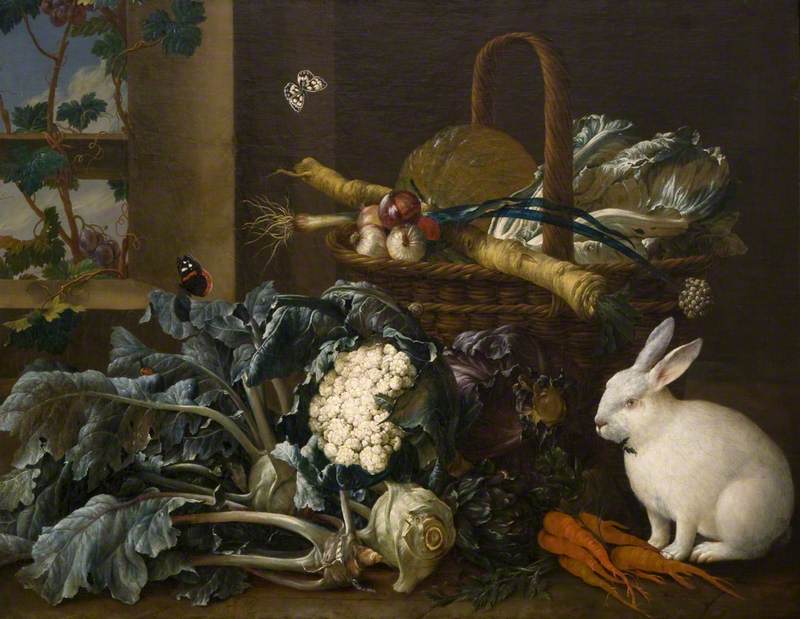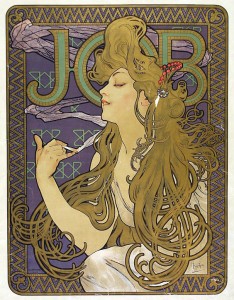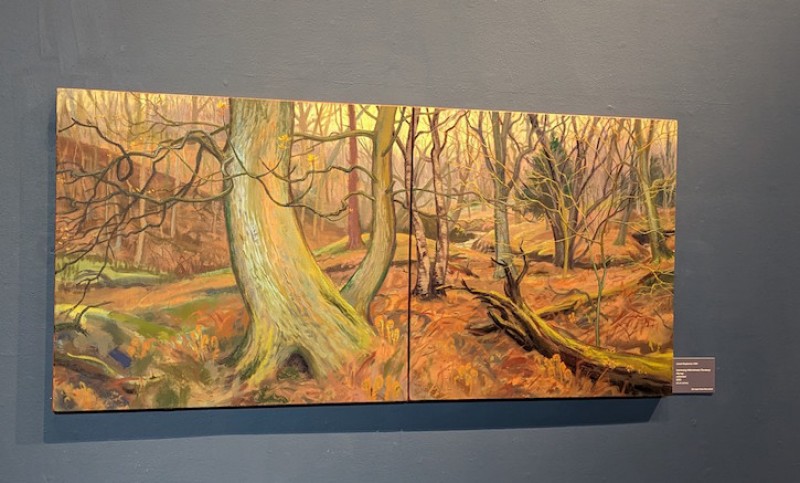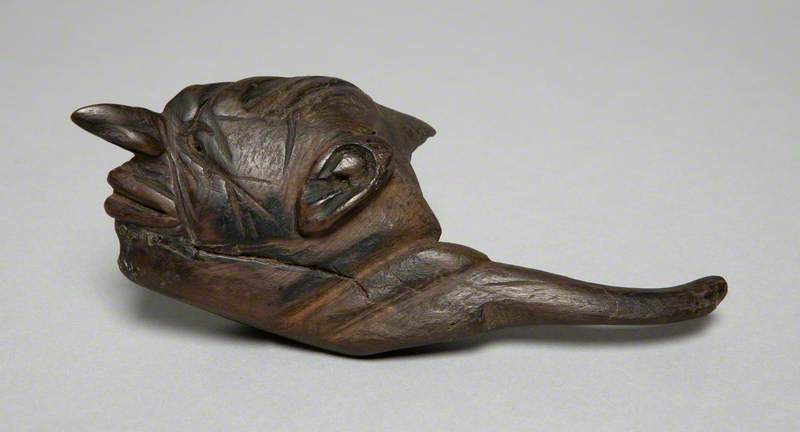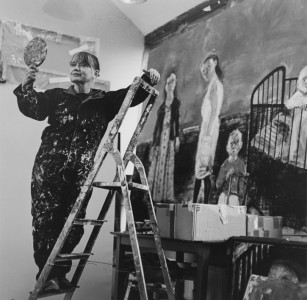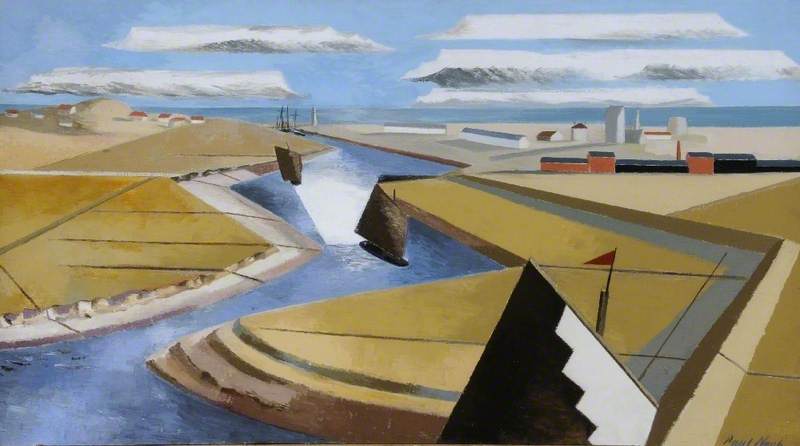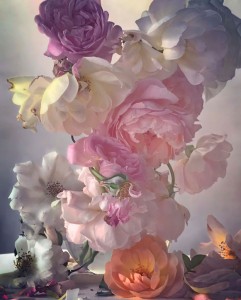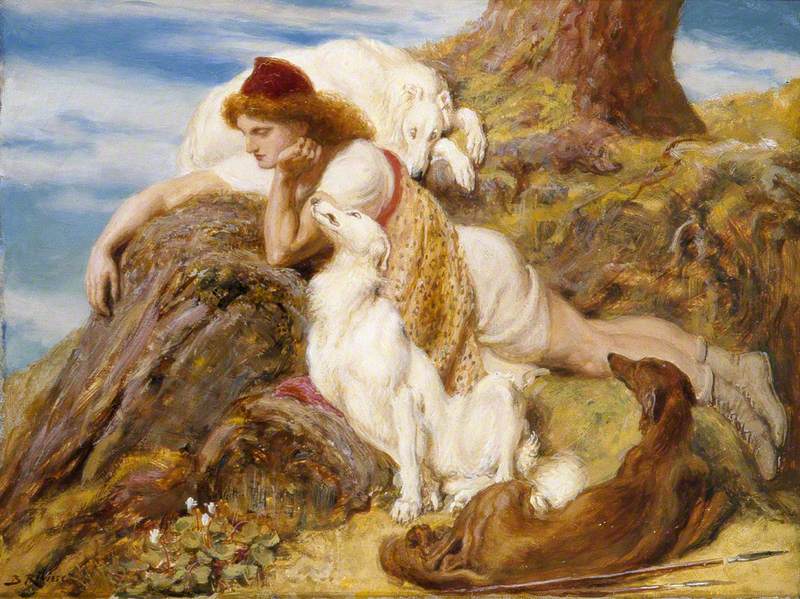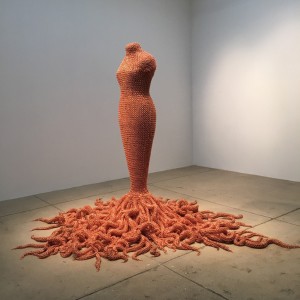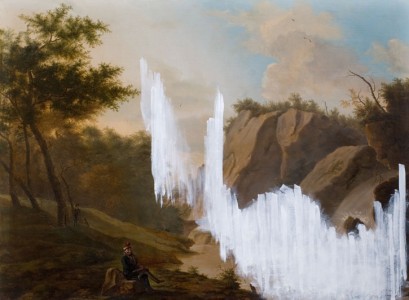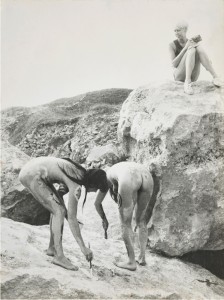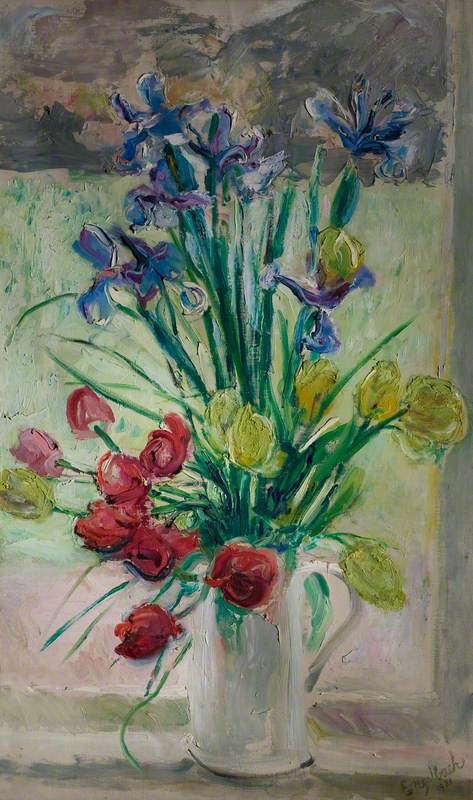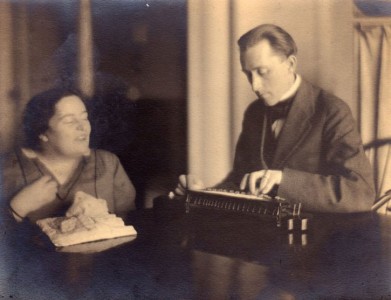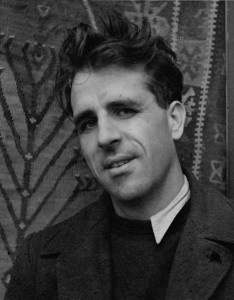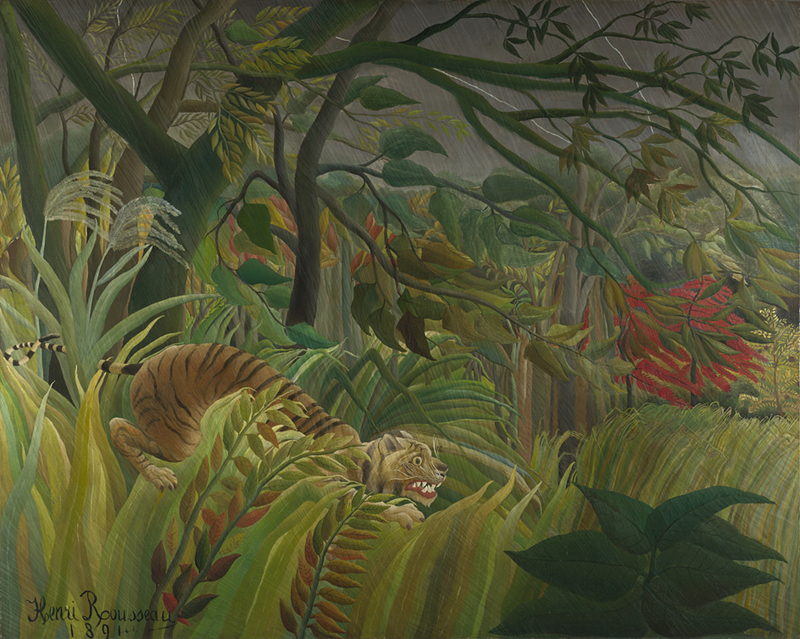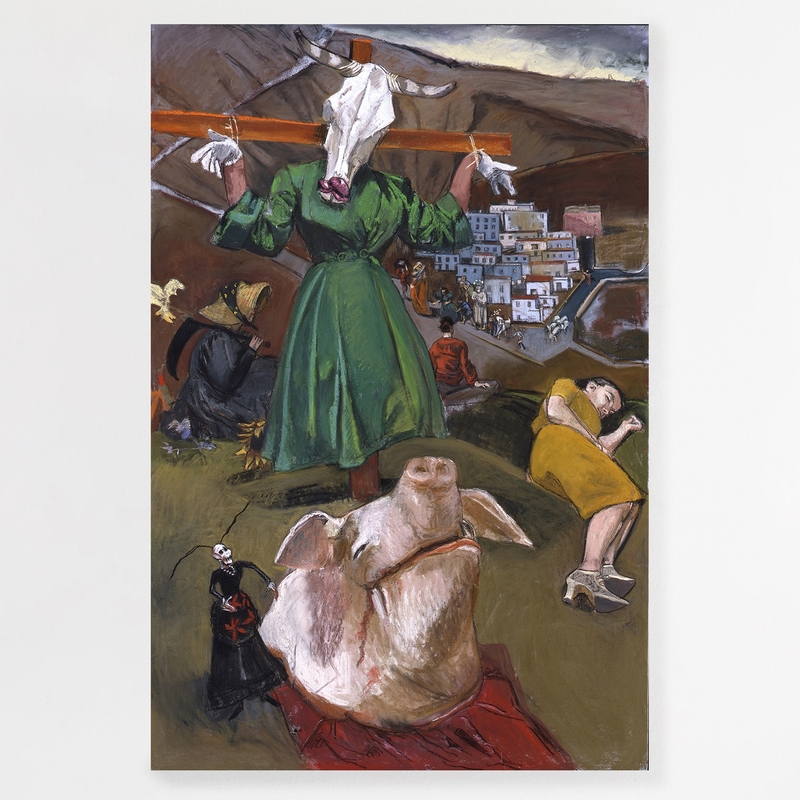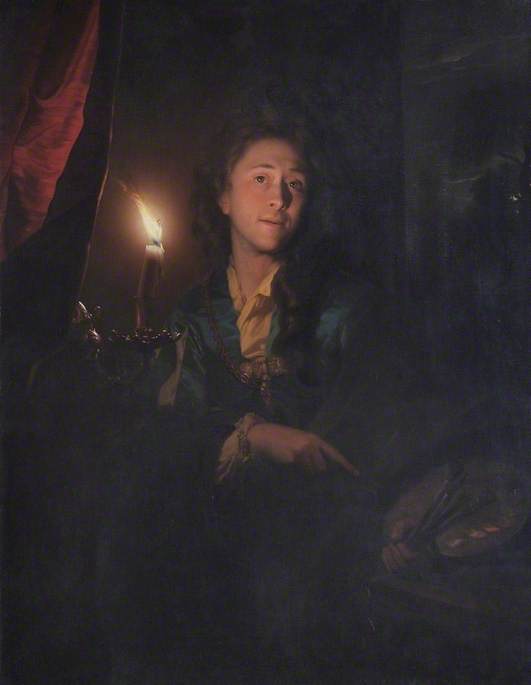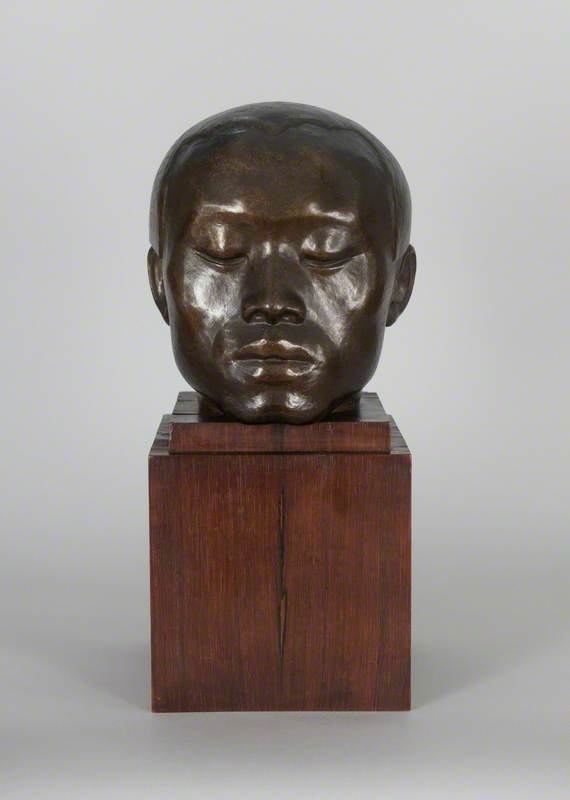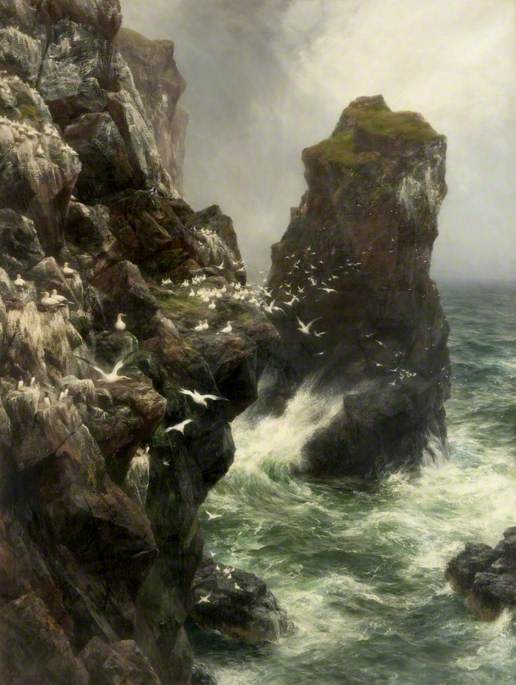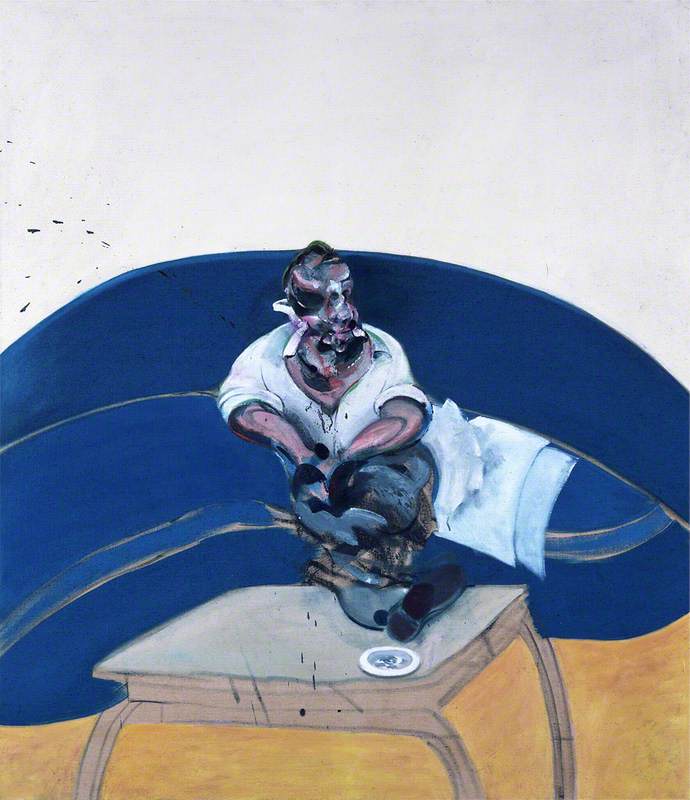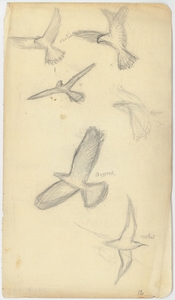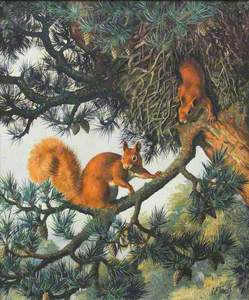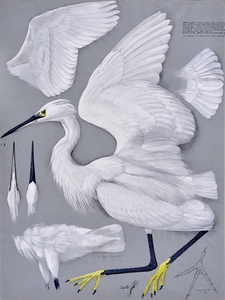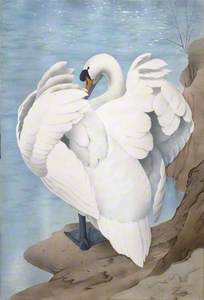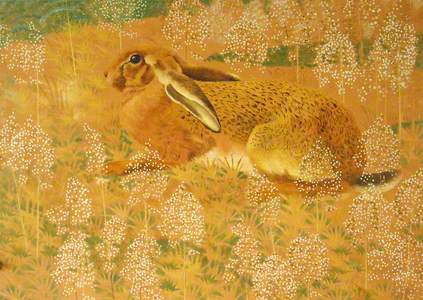Charles Tunnicliffe (1901–1979) was born in Langley, a small village near Macclesfield in Cheshire. His father William was a shoemaker but was advised by his doctor for the good of his health to give up the workshop and pursue a life outdoors. When he and his wife Margaret learned that Lane Ends Farm in nearby Sutton Lane Ends was available for sale, they quickly made the decision to move and make a fresh start. The farm had around 20 acres of land, enough for them to raise cattle and keep horses, pigs and poultry.
Charles Tunnicliffe in the studio
1974, photograph by Sean Hagerty (1929–2004) 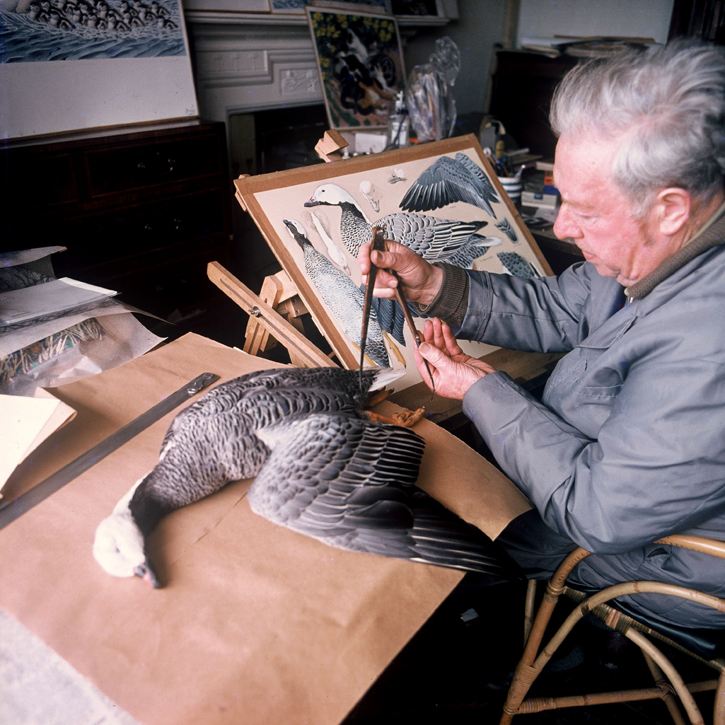
From an early age, Tunnicliffe displayed a gift for drawing, undoubtedly inspired by his immediate surroundings. Armed with white chalk, he drew farm animals on the black creosoted walls of the farm's outbuildings, initially to his father's disapproval.
Soon, as his ability developed, his parents bought him paper, sketchbooks and art materials. At school, his talent was spotted by his headmaster, Buckley Moffat, who further encouraged his development as an artist and helped him secure a scholarship to attend the Macclesfield School of Art and Design. There, under the guidance of Principal Thomas Cartwright, Tunnicliffe's formal training as an artist began. He excelled at his work, showing an all-round ability in a variety of media. Cartwright rightly believed that he had much potential, and encouraged his student to try for a place at London's Royal College of Art.
At 19 years of age, he easily passed the entrance exams and the college confirmed that his work was worthy of a scholarship. However, this achievement was marred by bittersweet feelings: he knew that he would dislike London, being a complete opposite to the area where he grew up and away from his beloved countryside and animals, but the prospect of being taught at one of the world's most prestigious art schools, where many of the great masters had trained, eased his apprehensions.
In London, his work surpassed all expectations. He eventually passed with a diploma and accepted the offer to stay another year to train as an etcher. To cover the high costs of living in London, he taught part-time and, with the help of art critic and print dealer Malcolm Salaman, sold etchings to the American market. By 1928, he decided to leave London and move back to Macclesfield and in 1929 he married Winfred Wonnacott, a fellow student he met at the Royal College of Art.
When the market for original artist's etchings dried up in the early 1930s, and with encouragement from Winifred, Tunnicliffe wrote to the publisher Putnam's to see if they would be interested in using his work for Henry Williamson's Tarka the Otter, first released without illustrations in 1927. They liked his sample etchings, but for printing, they needed wood engravings.
His subsequent wood engravings were accepted and the illustrated edition, containing 23 single-page wood engravings and 16 line drawings, was launched in 1932. This was the start of a successful collaboration with the author which saw him create illustrations for Williamson's next seven books, including The Lone Swallows (1933) and Peregrine Saga (1934).
In order to achieve accuracy in his illustrations for Peregrine Saga, Tunnicliffe travelled to Avebury in Wiltshire to meet a group of falconers. The club secretary gave permission for him to draw and study the birds at close quarters. In addition to peregrines, Tunnicliffe was able to study goshawks, sparrowhawks and merlins. He spent five days in their company – enough time to fill many sketchbooks with detailed drawings and notes.
Dyn Noeth yn Eistedd / Seated Male Nude
1919–1925
Charles Frederick Tunnicliffe (1901–1979) 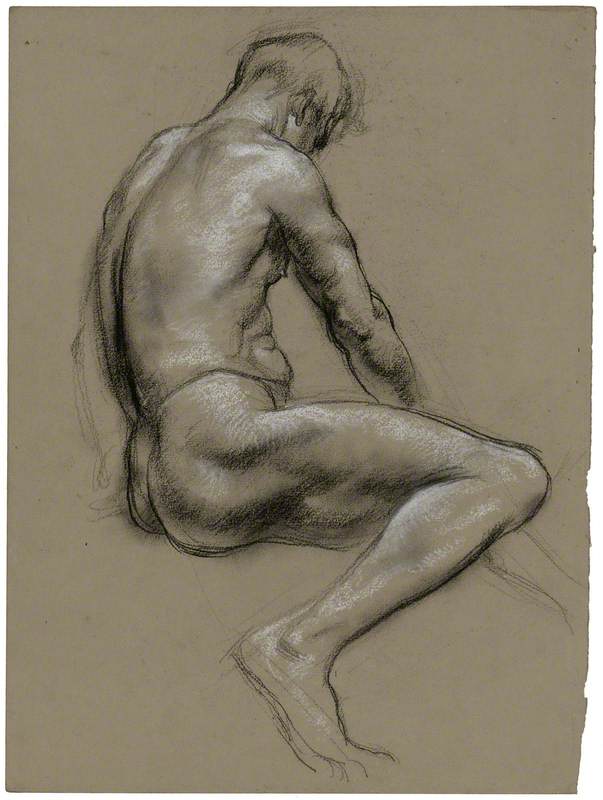
Due to the success of this collaboration, Tunnicliffe gained much work as an illustrator. During the 1930s he was increasingly asked to portray birds and wildlife subjects and his quest for knowledge led him to the naturalist John Clegg (1909–1998), who provided useful ornithological information to the young artist. Importantly, Clegg introduced him to the zoologist Reginald W. Wagstaffe (1907–1983), who at the time was curator of natural history at Stockport Museum. There, Wagstaffe gave Tunnicliffe access to the many bird specimens held in the collection, allowing him to study them in minute detail, further enhancing his knowledge.
As part of Tunnicliffe's ambition to learn about their various species and orders, he began the task of creating highly detailed measured drawings. These, which he termed 'feather maps', provided him with masses of accurate information relating to dimensions, plumage, colouration and stages of development. The earliest known example is of a jackdaw, dated November 1935. It is also noted that Winifred purchased examples of duck (pochards and shovelers) and other birds from butcher's shops in Manchester for him to study.
Astudiaeth o Adar yn Hedfan / Study of Birds in Flight
c.1925–1935
Charles Frederick Tunnicliffe (1901–1979) 
This body of work became his personal image library and reference source from which he could create any bird illustration or finished painting. Over the years he acquired specimens for study from roadkill, beach finds or examples of birds that had been shot, many brought to him by friends and acquaintances who knew of his ambition. As he developed his collection, he gained in-depth knowledge and produced work for the RSPB and many of the UK's wildlife trusts, as well as illustrating several nature-themed books.
In addition, he wrote and illustrated several of his own books, including Mereside Chronicle and Shorelands Summer Diary, an account of his first summer of living on Anglesey after he and Winifred moved there in 1947. During the 1960s he famously illustrated five books for Ladybird, and produced illustrations for Brooke Bond Tea cards – commissions that distributed his work to a wide range of audiences.
As an artist, Charles Tunnicliffe had a long association with the Royal Academy, showing his first two works there at the 1928 Summer Exhibition. He successfully submitted etchings and watercolours throughout the 1930s and in 1944 he was accepted as an associate member of the Royal Academy. Ten years later, after both he and his wife had settled on Anglesey, he was awarded full RA membership.
Elyrch y Gogledd yn Malltraeth / Whooper Swans at Malltraeth
1955–1970
Charles Frederick Tunnicliffe (1901–1979) 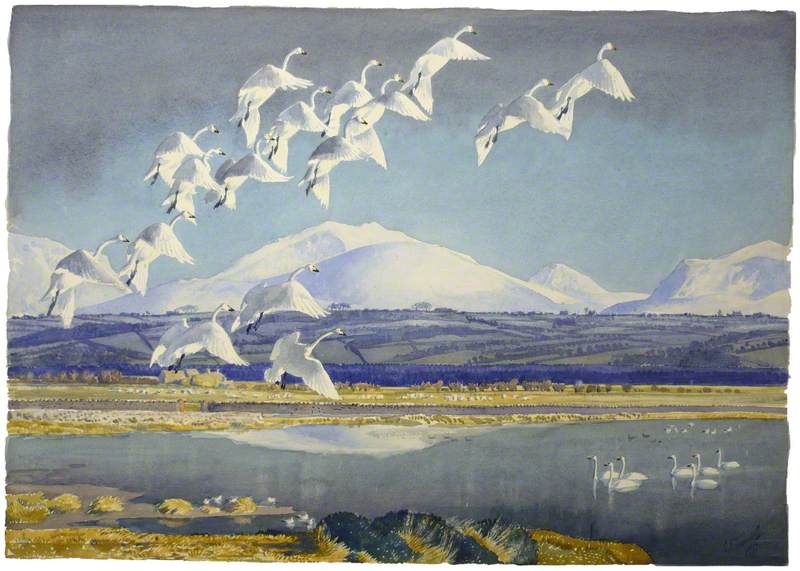
When the artist passed away in 1979 he left an astonishing legacy. His illustrations had appeared in over 400 books and he had submitted six artworks annually to the Royal Academy's Summer Exhibition, nearly all selling on the first day. His studio contained countless sketchbooks, all filled with remarkable studies of landscapes and wildlife. He had created well over 300 of his treasured measured drawings, none of which were intended for public display.
In 1981, his estate put the contents of his studio up for sale at Christie's auction house in London. Before the sale, Anglesey Council, with the financial help of the RSPB, Shell Oil Company and the Victoria and Albert Museum Purchase Grant Fund, managed to purchase the entire collection from the family, bringing it into public ownership on the island he and Winifred had made their home.
This substantial body of work is now cared for at Oriel Môn and has enthralled and inspired Anglesey's residents and visitors since opening in 1991.
Tunnicliffe's detailed and accurate work has relevance to modern wildlife study and serves to remind us of his considerable talents and achievements.
Ian Jones, Building and Collections Manager at Oriel Môn

